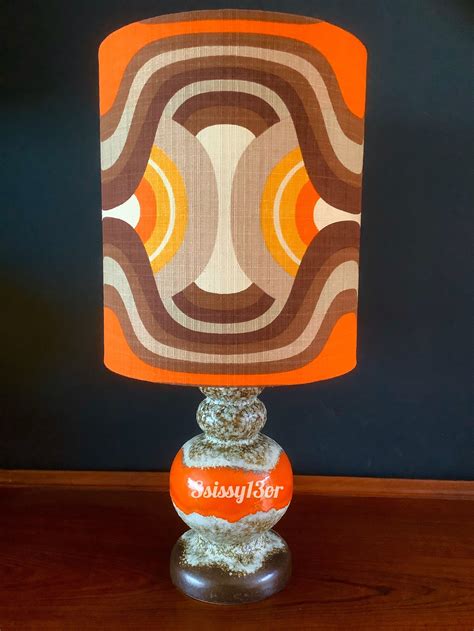
Dryer sheets appearing in mailboxes aren’t trash; they are a strategic pest deterrent employed by postal workers to ward off wasps, yellow jackets, and other stinging insects known to nest in mail receptacles.
Postal workers across the United States have reportedly been placing dryer sheets in mailboxes to deter stinging insects, particularly wasps and yellow jackets, from building nests. This simple yet effective tactic leverages the insects’ aversion to certain scents present in dryer sheets, providing a safer environment for mail carriers and homeowners alike. While not an officially sanctioned method by the United States Postal Service (USPS), anecdotal evidence and reports from postal workers suggest its widespread use and perceived effectiveness.
The practice gained traction as an informal solution to a persistent problem: aggressive stinging insects disrupting mail delivery and posing a threat to postal workers. Wasps and yellow jackets are known to build nests in enclosed spaces, making mailboxes an attractive option, especially during the warmer months. The resulting stings can be painful and, in some cases, life-threatening for individuals with allergies.
“I was getting stung every day,” one postal worker told Yahoo Life, explaining the motivation behind adopting the dryer sheet method. The decision to use dryer sheets was driven by necessity and a desire to find a practical, readily available solution.
While the precise mechanism of action is not fully understood, the prevailing theory is that the strong scents emitted by dryer sheets interfere with the insects’ olfactory senses, making it difficult for them to locate or establish nests. Dryer sheets typically contain a combination of fragrances and chemicals designed to soften fabrics and reduce static cling. These compounds, while pleasant to humans, appear to be repulsive to certain insect species.
Experts suggest that the effectiveness of dryer sheets as an insect repellent may vary depending on the specific brand and composition of the sheet, as well as the type of insect. Some insects may be more sensitive to certain scents than others. However, the low cost and ease of implementation make it a worthwhile option for individuals seeking to deter stinging insects from their mailboxes.
The use of dryer sheets in mailboxes raises some questions about potential environmental impacts and the safety of chemicals coming into contact with mail. While dryer sheets are generally considered safe for their intended use in laundry, their long-term effects on the environment and non-target organisms are not fully known. Concerns have also been raised about the potential for allergic reactions to the chemicals in dryer sheets, particularly for individuals with sensitive skin.
Despite these concerns, the practice appears to be widespread, with many postal workers attesting to its effectiveness. Some homeowners have also adopted the method as a preventative measure, placing dryer sheets in their mailboxes even if they have not experienced problems with stinging insects.
The dryer sheet method is not a guaranteed solution, and alternative methods exist for deterring stinging insects. These include using commercial insect repellents specifically designed for wasps and yellow jackets, sealing any cracks or openings in the mailbox that could serve as entry points for insects, and regularly inspecting the mailbox for signs of nest building. In cases of severe infestations, professional pest control services may be necessary.
The USPS has not officially endorsed the use of dryer sheets as an insect repellent, and the agency’s official guidelines for dealing with stinging insects may vary depending on the local post office. However, the widespread adoption of the practice by postal workers suggests a need for more comprehensive strategies for managing stinging insect populations and protecting postal workers from stings.
The dryer sheet phenomenon highlights the challenges faced by postal workers in dealing with environmental hazards and the importance of finding practical, cost-effective solutions. While further research is needed to fully understand the effectiveness and potential impacts of the dryer sheet method, it remains a popular and widely used tactic for deterring stinging insects from mailboxes across the country.
The practice also sparks a broader conversation about the use of unconventional methods for pest control and the need for safer, more sustainable approaches to managing insect populations in urban and suburban environments. As climate change and other environmental factors continue to alter insect distributions and behaviors, innovative strategies for mitigating human-wildlife conflicts will become increasingly important.
Ultimately, the dryer sheet in the mailbox serves as a reminder of the resourcefulness and adaptability of postal workers in the face of everyday challenges. It also underscores the need for ongoing research and development of effective, environmentally sound solutions for managing stinging insect populations and ensuring the safety of both postal workers and the public.
The dryer sheet strategy provides a low-cost, readily available method for deterring these insects. Though not officially sanctioned, its grassroots adoption speaks to its perceived effectiveness.
In-Depth Analysis of Dryer Sheet Insect Repellency
The dryer sheet phenomenon, where postal workers place dryer sheets in mailboxes to deter stinging insects, highlights a fascinating intersection of anecdotal evidence, practical application, and scientific inquiry. While the practice has gained widespread popularity among postal workers seeking relief from wasp and yellow jacket stings, the underlying mechanisms and overall effectiveness remain subjects of ongoing debate and investigation.
The Science Behind the Scent:
The core principle behind the dryer sheet method lies in the olfactory senses of insects. Wasps and yellow jackets, like many insects, rely heavily on their sense of smell to navigate their environment, locate food sources, and identify suitable nesting sites. Dryer sheets contain a complex mixture of fragrances and chemicals designed to impart a pleasant scent to laundry and reduce static cling. These chemicals, which may include compounds such as linalool, alpha-terpineol, and various esters, are thought to disrupt the insects’ olfactory pathways, making it difficult for them to find or establish nests.
The precise mode of action is not fully understood, but several hypotheses have been proposed. One possibility is that the strong, unfamiliar scents mask or interfere with the pheromones that wasps and yellow jackets use to communicate and attract nestmates. Another is that certain chemicals in dryer sheets may be directly repellent to these insects, causing them to avoid areas where the scent is present.
It’s important to note that the effectiveness of dryer sheets as insect repellents may vary depending on several factors, including:
- Dryer Sheet Composition: Different brands and formulations of dryer sheets contain varying amounts and types of fragrances and chemicals. Some insects may be more sensitive to certain compounds than others.
- Insect Species: The sensitivity to specific scents can vary across different insect species. What repels wasps may not necessarily repel other types of insects.
- Environmental Conditions: Wind, temperature, and humidity can all affect the dispersal and persistence of scents, potentially influencing the effectiveness of dryer sheets as repellents.
- Individual Insect Behavior: Some insects may be more tolerant of or adaptable to the scents emitted by dryer sheets than others.
Anecdotal Evidence vs. Scientific Validation:
While anecdotal evidence from postal workers suggests that dryer sheets can be effective in deterring stinging insects, scientific validation of this claim is limited. Few rigorous studies have been conducted to assess the efficacy of dryer sheets as insect repellents under controlled conditions.
Some studies have investigated the repellent properties of individual chemicals commonly found in dryer sheets. For example, linalool, a fragrance compound often used in dryer sheets, has been shown to have repellent effects against certain insects, including mosquitoes and cockroaches. However, these studies typically focus on individual compounds rather than the complex mixture of chemicals present in dryer sheets.
More research is needed to determine the extent to which dryer sheets effectively deter wasps and yellow jackets from nesting in mailboxes. Such research could involve field experiments comparing the number of nests built in mailboxes with and without dryer sheets, as well as laboratory studies examining the behavioral responses of wasps and yellow jackets to different dryer sheet formulations.
Environmental and Safety Concerns:
The use of dryer sheets in mailboxes raises several environmental and safety concerns. Dryer sheets typically contain synthetic chemicals that can persist in the environment and potentially leach into soil and water. While the concentrations of these chemicals in individual dryer sheets are relatively low, the widespread use of dryer sheets in mailboxes could contribute to cumulative environmental impacts.
Concerns have also been raised about the potential for allergic reactions to the chemicals in dryer sheets. Some individuals may be sensitive to certain fragrances or chemicals, and exposure to dryer sheets could trigger skin irritation, respiratory problems, or other allergic symptoms.
To minimize potential risks, it’s important to use dryer sheets responsibly and consider alternative methods for deterring stinging insects. Environmentally friendly dryer sheet options, which contain natural fragrances and biodegradable materials, may be a safer alternative.
Alternative Pest Control Strategies:
While dryer sheets may offer a convenient and readily available solution for deterring stinging insects, a variety of alternative pest control strategies can also be employed. These include:
- Commercial Insect Repellents: Insect repellents specifically designed for wasps and yellow jackets can be applied to mailboxes and surrounding areas to deter these insects.
- Sealing Entry Points: Sealing any cracks or openings in the mailbox can prevent insects from entering and building nests.
- Regular Inspections: Regularly inspecting the mailbox for signs of nest building can allow for early detection and removal of nests before they become established.
- Professional Pest Control: In cases of severe infestations, professional pest control services may be necessary to safely and effectively remove nests and prevent future infestations.
- Wasp Traps: Wasp traps can lure and capture wasps, reducing their populations in the area.
- Natural Repellents: Certain natural substances, such as peppermint oil and clove oil, have been shown to repel insects. These can be applied to mailboxes or used to create homemade insect repellents.
The USPS Perspective:
The United States Postal Service (USPS) has not officially endorsed the use of dryer sheets as an insect repellent. The agency’s official guidelines for dealing with stinging insects may vary depending on the local post office.
However, the widespread adoption of the practice by postal workers suggests a need for more comprehensive strategies for managing stinging insect populations and protecting postal workers from stings. The USPS could consider implementing a standardized approach to pest control, providing postal workers with training and resources for dealing with stinging insects, and conducting research to evaluate the effectiveness of different pest control methods.
Conclusion:
The dryer sheet phenomenon highlights the challenges faced by postal workers in dealing with environmental hazards and the importance of finding practical, cost-effective solutions. While further research is needed to fully understand the effectiveness and potential impacts of the dryer sheet method, it remains a popular and widely used tactic for deterring stinging insects from mailboxes across the country.
The practice also sparks a broader conversation about the use of unconventional methods for pest control and the need for safer, more sustainable approaches to managing insect populations in urban and suburban environments. As climate change and other environmental factors continue to alter insect distributions and behaviors, innovative strategies for mitigating human-wildlife conflicts will become increasingly important.
Ultimately, the dryer sheet in the mailbox serves as a reminder of the resourcefulness and adaptability of postal workers in the face of everyday challenges. It also underscores the need for ongoing research and development of effective, environmentally sound solutions for managing stinging insect populations and ensuring the safety of both postal workers and the public.
Frequently Asked Questions (FAQ)
1. Why are dryer sheets being placed in mailboxes?
Dryer sheets are reportedly being placed in mailboxes by postal workers as a method to deter stinging insects, such as wasps and yellow jackets, from building nests inside. The strong scents emitted by dryer sheets are believed to repel these insects. According to Yahoo Life, one postal worker stated they were “getting stung every day,” motivating the use of dryer sheets as a deterrent.
2. Is there scientific evidence that dryer sheets repel insects?
While anecdotal evidence suggests that dryer sheets deter insects, scientific validation is limited. The effectiveness likely depends on the specific chemicals and fragrances present in the dryer sheet, as well as the insect species. Some studies have shown that certain chemicals found in dryer sheets, such as linalool, have repellent properties against insects, but comprehensive studies specifically testing dryer sheets on wasps and yellow jackets are lacking.
3. Are there any risks associated with putting dryer sheets in mailboxes?
Yes, there are potential risks. Dryer sheets contain synthetic chemicals that could leach into the environment. Some people may also be allergic to the fragrances or chemicals in dryer sheets, leading to skin irritation or respiratory issues. Using environmentally friendly dryer sheet alternatives can reduce some risks.
4. What are some alternative ways to deter stinging insects from mailboxes?
Alternative methods include using commercial insect repellents specifically designed for wasps and yellow jackets, sealing cracks or openings in the mailbox to prevent insect entry, regularly inspecting the mailbox for nests, and employing professional pest control services for severe infestations. Natural repellents like peppermint oil can also be used.
5. Does the USPS officially endorse the use of dryer sheets for insect control?
No, the USPS has not officially endorsed the use of dryer sheets as an insect repellent. The agency’s guidelines may vary by local post office. However, the widespread use of this method by postal workers indicates a need for more comprehensive and standardized strategies for managing stinging insect populations.
Expanded Information on Dryer Sheet Chemicals and Their Effects
To delve deeper into the science behind the dryer sheet phenomenon, it’s crucial to examine the specific chemicals typically found in dryer sheets and their known effects on insects. While the exact composition varies between brands, some common ingredients include:
-
Linalool: A naturally occurring monoterpene alcohol found in many flowers and spice plants. It’s widely used as a fragrance ingredient in dryer sheets and other consumer products. Studies have shown that linalool has repellent and insecticidal properties against various insects, including mosquitoes, fruit flies, and cockroaches. Its mechanism of action is believed to involve disrupting the insect’s nervous system and olfactory senses.
-
Alpha-Terpineol: Another monoterpene alcohol found in essential oils. It’s used as a fragrance ingredient and solvent in dryer sheets. Alpha-terpineol has been shown to have repellent effects against certain insects, although its efficacy may vary depending on the species.
-
Benzyl Acetate: An ester with a sweet, floral scent. It’s commonly used as a fragrance ingredient in dryer sheets and other products. While benzyl acetate is generally considered safe for humans in low concentrations, some studies have suggested that it may have irritant or allergenic properties in sensitive individuals. Its effect on insects is less well-studied, but it’s possible that its strong scent could deter some species.
-
Quaternary Ammonium Compounds: These are cationic surfactants used as fabric softeners and antistatic agents in dryer sheets. Examples include dialkyldimethylammonium chloride (DADMAC) and ditallowoylethyl hydroxyethylmonium methosulfate. While these compounds are primarily designed to alter the surface properties of fabrics, some studies have suggested that they may also have antimicrobial properties. Their effect on insects is not well-understood, but it’s possible that they could disrupt the insects’ cuticle or other physiological processes.
-
Silicones: Silicone polymers, such as polydimethylsiloxane (PDMS), are used as fabric softeners and lubricants in dryer sheets. They create a smooth, silky feel on fabrics and reduce static cling. Silicones are generally considered safe for humans and the environment, but their effect on insects is largely unknown.
The combined effect of these chemicals in dryer sheets is likely complex and may involve synergistic interactions. The strong, unfamiliar scent of the dryer sheet may overwhelm the insects’ olfactory senses, making it difficult for them to locate food sources, communicate with nestmates, or identify suitable nesting sites. The chemicals may also have direct repellent or irritant effects on the insects, causing them to avoid areas where the scent is present.
The Role of Pheromones in Insect Behavior
To fully appreciate how dryer sheets might deter stinging insects, it’s essential to understand the role of pheromones in insect behavior. Pheromones are chemical signals that insects use to communicate with each other. They play a critical role in various aspects of insect life, including:
-
Mate Attraction: Sex pheromones are used to attract potential mates from a distance.
-
Alarm Signaling: Alarm pheromones are released when an insect is threatened, alerting other insects in the vicinity to danger.
-
Trail Marking: Trail pheromones are used to mark trails to food sources or nesting sites.
-
Aggregation: Aggregation pheromones are used to attract insects to a specific location, such as a food source or a suitable nesting site.
Wasps and yellow jackets, like many social insects, rely heavily on pheromones to coordinate their activities and maintain colony cohesion. For example, they use pheromones to mark trails to food sources, recruit nestmates to defend the colony, and regulate caste differentiation.
The strong scents emitted by dryer sheets may interfere with these pheromone-based communication systems, making it difficult for wasps and yellow jackets to navigate their environment, locate food sources, or establish nests. By masking or disrupting pheromone signals, dryer sheets may effectively create an “unfriendly” environment for these insects, causing them to avoid areas where the scent is present.
The Importance of Responsible Pest Control Practices
While the dryer sheet method may offer a convenient and readily available solution for deterring stinging insects, it’s crucial to adopt responsible pest control practices that minimize potential risks to human health and the environment. This includes:
-
Using Insecticides Sparingly: Insecticides should only be used as a last resort, and only when necessary to control severe infestations.
-
Targeting Specific Pests: Insecticides should be chosen based on the specific pest being targeted, and applied only to areas where the pest is present.
-
Following Label Instructions: Always follow the label instructions carefully when using insecticides, and wear appropriate protective gear.
-
Considering Non-Chemical Alternatives: Non-chemical pest control methods, such as sealing entry points, removing food sources, and using traps, should be considered whenever possible.
-
Protecting Non-Target Organisms: Take precautions to protect non-target organisms, such as pollinators and beneficial insects, from exposure to insecticides.
-
Proper Disposal of Pesticides: Dispose of unused pesticides and empty containers properly, according to local regulations.
By adopting responsible pest control practices, we can minimize the risks associated with pesticide use and protect human health and the environment.
The Future of Insect Repellents
As concerns about the environmental and health impacts of synthetic insecticides continue to grow, there is increasing interest in developing safer, more sustainable insect repellents. This includes:
-
Botanical Insect Repellents: Plant-derived compounds, such as essential oils and extracts, have been shown to have repellent properties against various insects. These botanical repellents are often less toxic and more environmentally friendly than synthetic insecticides.
-
Biopesticides: Biopesticides are derived from natural sources, such as bacteria, fungi, and viruses. They can be used to control insect pests in a more targeted and environmentally friendly manner than synthetic insecticides.
-
Genetic Control Strategies: Genetic control strategies, such as sterile insect technique (SIT) and gene editing, are being developed to control insect populations in a more sustainable and species-specific manner.
-
Nanotechnology-Based Repellents: Nanotechnology is being used to develop novel insect repellents that are more effective, longer-lasting, and safer for the environment.
The development of these new insect repellents holds promise for a future where pest control is more sustainable and less harmful to human health and the environment.
Conclusion (Revised)
The deployment of dryer sheets in mailboxes by postal workers, though an informal and unverified tactic, reflects a pressing need for effective and accessible methods to deter stinging insects. This practice, driven by the practical experiences of those directly affected by insect stings, underscores the importance of considering unconventional solutions to common problems. While the precise scientific mechanisms behind the purported repellent effects of dryer sheets warrant further investigation, the anecdotal evidence is compelling. Concerns regarding the environmental impact and potential allergic reactions associated with dryer sheet chemicals necessitate a balanced approach, encouraging responsible usage and the exploration of safer, more sustainable alternatives. The incident highlights the vital role of frontline workers in identifying and addressing everyday challenges and advocating for solutions that enhance their safety and well-being. The development of eco-friendly, scientifically validated pest control methods remains crucial to ensuring both the safety of postal workers and the preservation of environmental health. Ultimately, the “dryer sheet in the mailbox” story serves as a microcosm of a broader imperative: the need for continuous innovation and collaborative problem-solving in the face of environmental and occupational health challenges.









